Pokud hledáte lyže, které zvládnou jak parkové triky, tak all-mountain terén, Snowfeet Skiblades by mohly být právě to, co potřebujete. Tyto krátké, hybridní lyže (k dispozici v délkách 99 cm a 120 cm) jsou navrženy tak, aby nabízely obratnost v parku a kontrolu na upravených sjezdovkách – bez objemu a nákladů tradičních delších lyží. Zde je rychlý přehled:
- 99 cm Skiblades: Ideální pro nadšence parku. Lehká, snadno ovladatelná a skvělá na triky, ale nejsou nejlepší pro vysoké rychlosti nebo hluboký prašan.
- 120 cm Skiblades: Rovnováha mezi stabilitou a rychlostí. Lépe zvládají různorodý terén než kratší model, ale obětují trochu obratnosti v parku.
- All-Mountain lyže: Skvělé pro rychlost a prašan, ale těžší, hůře ovladatelné v úzkých prostorách a méně vhodné do parku.
Pokud chcete něco přenosného, zábavného a cenově dostupného (začíná na 350 $), Snowfeet Skiblades stojí za zvážení. Pro větší stabilitu při vysokých rychlostech nebo v prašanu mohou být lepší tradiční all-mountain lyže jako Nordica Enforcer 94 (750 $) – ale nejsou tak obratné pro použití v parku.
| Vlastnost | Snowfeet 99 cm | Snowfeet 120 cm | All-Mountain lyže |
|---|---|---|---|
| Nejlepší pro | Parkové triky | Smíšené použití | Rychlost & prašan |
| Obratnost | Vysoký | Střední | Nízký |
| Stabilita při rychlosti | Nízký | Střední | Vysoký |
| Cenové rozpětí | $350–$400 | $400–$500 | $650–$800 |
Pro lyžaře, kteří milují rozmanitost a oceňují pohodlí, jsou Snowfeet Skiblades zábavnou a cenově dostupnou volbou. Chcete se dozvědět víc? Pojďme na to!
LINE Skis 2026 Chronic Skis Collection - Ski & Destroy With The Chronic Collection
1. Snowfeet* Skiblades (99 cm, přibližně 39 palců)
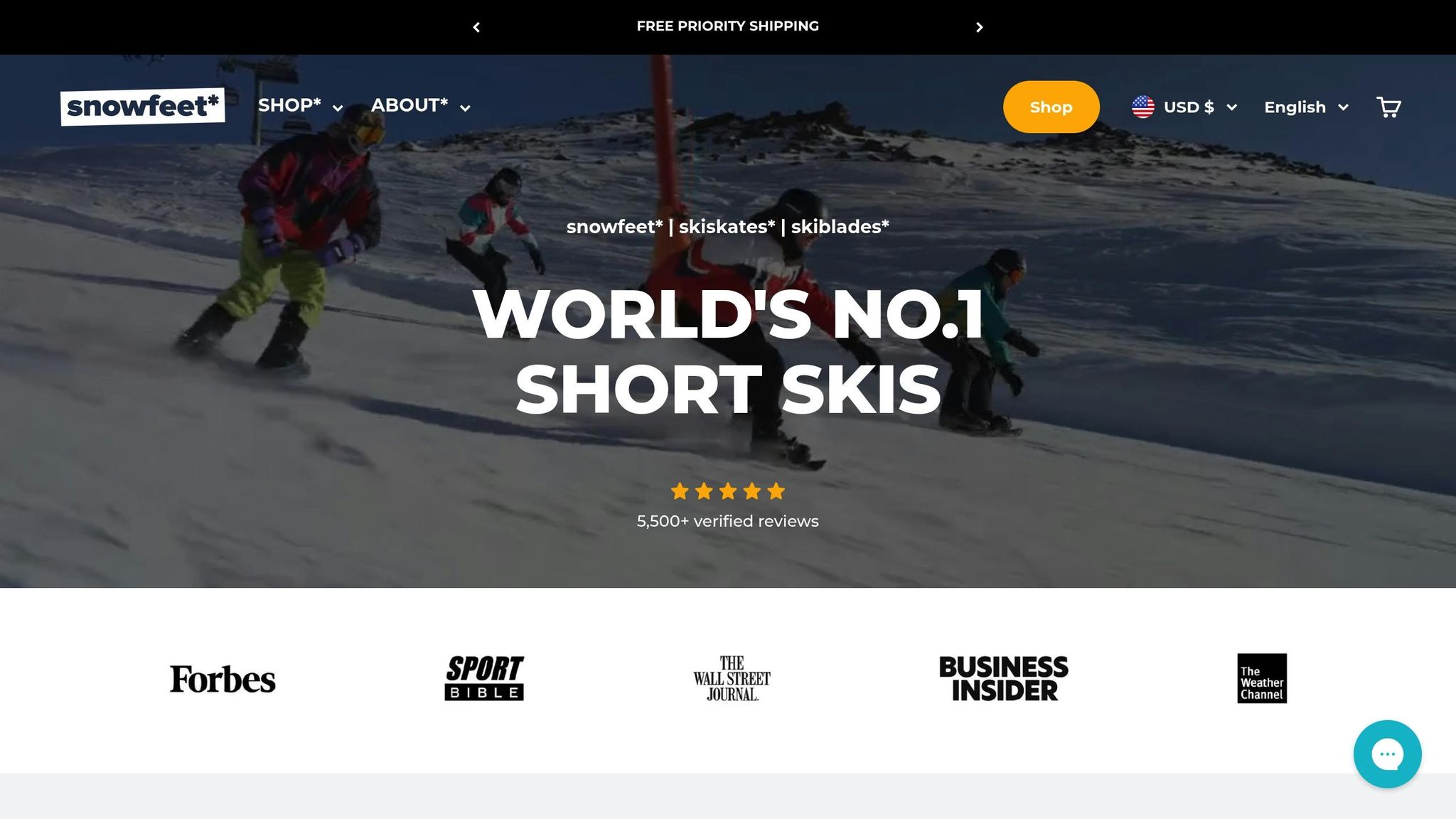
Snowfeet* Skiblades o délce 99 cm (přibližně 39 palců) jsou fantastickou volbou pro lyžaře hledající kombinaci všestrannosti a zábavy. S impozantním hodnocením 5,00 z 5 od 33 recenzí dokazují, že velikost neomezuje výkon. Pojďme se podívat, co dělá tyto skiblady výjimečnými.
Obratnost
Skiblady o délce 99 cm jsou navrženy pro lyžaře, kteří chtějí rychlou a přesnou kontrolu. Díky hlubokému parabolickému bočnímu řezu a úzkému poloměru zatáčky 6 metrů (přibližně 20 stop)[10,12] reagují okamžitě na vaše pohyby. Asymetrické dvojité špičky usnadňují přechod mezi jízdou vpřed a vzad, což je ideální pro rychlé zatáčky, triky a plynulý carving. Na rozdíl od delších lyží, které mohou působit těžce a hůře se ovládají, tyto skiblady udržují věci lehké a obratné.
Přenosnost
Jedna z nejlepších výhod? Jsou super snadno přenosné. Jejich lehká konstrukce znamená, že můžete svištět přeplněnými základnami nebo je hodit do standardního stojanu na lyže bez potíží. Tato přenosnost perfektně ladí s jejich všestrannými schopnostmi.
Výkon v parku a na all-mountain
Ať už míříte do parku nebo sjíždíte upravené svahy, tyto skiblady si poradí. Snadno zvládají boule a nerovný terén, nabízejí skvělou rovnováhu mezi plováním a kontrolou hran[10,12]. Bez ohledu na sněhové podmínky se můžete spolehnout na stabilitu a přesnost.
Únava a fyzická náročnost
Lyžujte déle, unavte se méně. Lehký a citlivý design snižuje únavu, dává vám větší kontrolu a umožňuje si užít svahy bez vyčerpání.
2. Snowfeet* Skiblades (120 cm, přibližně 47 palců)
Snowfeet* Skiblades o délce 120 cm nabízejí skvělou kombinaci stability a obratnosti. S perfektním hodnocením 5,0 z 5 hvězdiček od zákazníků dokazují, že nepotřebujete tradiční lyže o délce 150–200 cm, abyste zvládli parkové triky i all-mountain terén. Za cenu 650,00 $ poskytují vysoce výkonný zážitek z lyžování bez vysoké cenovky konvenčních lyží.
Obratnost
Tyto skiblady trefují ideální rovnováhu mezi kontrolou a stabilitou. Na délce 120 cm jsou citlivější než tradiční lyže, které obvykle měří od 150 cm do více než 200 cm. Jejich úzký pas 7,8 cm a design s dvojitým špičkovým zakončením – s 5,5 cm špičkou a 4,5 cm patou – umožňují rychlé a přesné zatáčky. To usnadňuje carving v těsných zatáčkách na upravených sjezdovkách a otevírá možnost plynulých přechodů do jízdy pozpátku pro parkové triky. Na rozdíl od objemnějších all-mountain lyží vás tyto skiblady udrží obratné a zároveň nabídnou kontrolu potřebnou pro technické manévry.
Přenosnost
I přes jejich prodlouženou délku jsou tyto skiblades snadno přenosné. Vešly se do standardních lyžařských nosičů a jsou méně komplikované při dlouhých přesunech z parkoviště. Na 120 cm jsou dostatečně kompaktní, aby se dalo snadno pohybovat v přeplněných základních chatách bez nepohodlí delších lyží. Ať už míříš na svahy nebo je ukládáš doma, přenosnost nebude problém.
Výkon v parku a na all-mountain
Co se týče všestrannosti, tyto skiblades skutečně excelují. Jsou perfektní pro lyžaře, kteří chtějí kombinovat triky a skoky v parku s objevováním různorodých terénů. Přidaná délka zlepšuje stabilitu při carvingu vysokou rychlostí a poskytuje lepší plavání v prašanu ve srovnání s kratšími skiblades. Zatímco tradiční lyže mohou vynikat ve stabilizaci při skocích, tyto skiblades nabízejí jedinečnou kombinaci přizpůsobivosti – ať už jezdíš po zábradlích, sjíždíš strmé svahy nebo držíš upravené tratě. Jsou stejně doma v parku, v prašanu i během all-mountain dobrodružství.
Únava a fyzická náročnost
Jednou z výrazných vlastností je, jak tyto skiblades pomáhají snižovat únavu. Jejich design ti umožní lyžovat déle, aniž by ses cítil vyčerpaný, což je skvělá volba pro delší sezení na svazích. Užiješ si více jízd a méně únavy během dne.
3. Standardní All-Mountain Lyže
Zatímco Snowfeet* Skiblades přinášejí nepřekonatelnou všestrannost do parkového a all-mountain lyžování, tradiční all-mountain lyže mají své vlastní výzvy.
Značky jako Rossignol, K2 a Salomon nabízejí all-mountain lyže v délce od 150 cm do více než 200 cm (59 až 79 palců). Tyto lyže jsou navrženy tak, aby zvládaly různé terény a podmínky, ale mohou být méně vhodné pro ty, kteří chtějí plynule kombinovat parkové lyžování během dne.
Obratnost
Tradiční all-mountain lyže nejsou přesně stavěné pro rychlé, přesné pohyby, což je činí méně ideálními pro parkové lyžování. Jejich delší délka ve srovnání se Snowfeet* Skiblades znamená, že nejsou tak obratné pro ostré zatáčky nebo provádění triků. Jistě, nabízejí stabilitu a kontrolu na otevřených svazích, ale ta samá stabilita může dělat triky, otáčky a zvládání parkových prvků náročnějšími.
Další nevýhoda? Hmotnost kyvu. I lehčí modely tradičních lyží vyžadují více úsilí k zahájení zatáček. Tato přidaná hmotnost zpomaluje přechody z hrany na hranu, díky čemuž působí pomalu vedle super-reaktivních 99 cm nebo 120 cm Snowfeet* variant. Tento nedostatek rychlosti ovlivňuje vše od carvingových zatáček po zvládání úzkých míst, zvláště když seskakuješ z vleku nebo se proplétáš mezi davy.
Přenosnost
Přiznejme si to - tradiční all-mountain lyže jsou na přepravu otravné. S délkou 150–200 cm potřebují střešní nosiče, nadměrné lyžařské vaky nebo extra plánování, jak je převážet. Procházet přeplněnými základními chatami nebo najít úložný prostor doma může být stejně frustrující. Ať už je chcete schovat do skříně nebo pověsit na zeď, zabírají hodně místa.
Na druhou stranu, Snowfeet* Skiblades se snadno přenášejí. Pohodlně se vejdou do kufru běžného auta a zabírají minimum místa, což je velká výhoda na lyžařských výletech, kde každý centimetr zavazadlového prostoru počítá. Pokud používáte veřejnou dopravu, jejich kompaktní velikost výrazně usnadňuje život.
Výkon v parku a na all-mountain
Zatímco all-mountain lyže vynikají na různorodém terénu, v parku příliš nevynikají. Například jízda po zábradlích může být obzvlášť náročná. Tyto lyže nejsou navrženy pro grindování a nárazy na zábradlí mohou poškodit hrany. Lyžaři tak mají dvě možnosti: zábradlí zcela vyhnout nebo riskovat nákladné opravy. Jejich delší délka také ztěžuje průjezd krabicemi, často vyžadující širší přístupy, které omezují rozmanitost triků.
Co se týče skoků, lehčí all-mountain lyže si vedou dobře, ale delší délka vyžaduje větší přesnost, aby nedošlo k zachycení hrany. To je činí méně odpouštějícími a méně univerzálními pro parkové použití.
Chad Jacob, trenér lyžařského závodění v Bristol Mountain, NY, shrnul kompromisy vysoce výkonných all-mountain lyží:
"Tohle je skutečný jeden pár lyží pro silného lyžaře... Chce se lyžovat naplno, na plný plyn - ale je citlivý a energický v úzkých místech."
- Chad Jacob
Ten přístup „na plný plyn“ může fungovat u některých lyžařů, ale není zrovna ideální pro kontrolovaný, technický styl potřebný k ovládnutí parkového lyžování.
Únava a fyzická náročnost
Těžší konstrukce a delší délka tradičních all-mountain lyží vás mohou rychleji unavit. Po dopoledni na sjezdovkách mohou vaše nohy být vyčerpané ještě předtím, než dorazíte do parku. Naproti tomu lehký a citlivý design Snowfeet* Skiblades pomáhá udržet únavu na uzdě, takže si můžete užít jak all-mountain sjezdy, tak parkové výzvy bez vyčerpání.
sbb-itb-17ade95
Výhody a nevýhody
Když přijde na výběr mezi Snowfeet* Skiblades a tradičními all-mountain lyžemi, jde o zvážení výhod a kompromisů. Pojďme rozebrat, jak si stojí v agilnosti, stabilitě a ceně.
Snowfeet* Skiblades 99 cm září v terénním parku. Jejich kompaktní design je ideální pro provádění parkových triků a rychlé, ostré přechody. Ale je tu háček - tato kratší délka není ideální pro rychlé sjezdy nebo plavání v hlubokém prašanu.
Na druhou stranu model 120 cm představuje kompromis. Nabízí lepší držení hran a zlepšený float pro různorodý terén, aniž by ztratil příliš mnoho z obratnosti potřebné pro parkové prvky. Nicméně obětuje část rychlé odezvy, která dělá kratší model oblíbeným pro ostré zatáčky a rychlé manévry.
Nyní si povězme něco o tradičních all-mountain lyžích. Značky jako Rossignol, K2 a Salomon zde dominují a nabízejí bezkonkurenční stabilitu při vysokých rychlostech, vynikající držení hran a plynulou jízdu po nerovném terénu. Vezměme si například Nordica Enforcer 94. Za 750 dolarů je to všestranná a spolehlivá volba v kategorii all-mountain. Tyto lyže jsou však těžší a delší, což je méně ideální pro triky v parku nebo úzké prostory.
Co se týče ceny, Snowfeet* Skiblades jsou jasným vítězem. Prémiové all-mountain lyže, jako Atomic Bent 100, obvykle stojí 650 až 800 dolarů. Mezitím model Snowfeet* 99 cm spadá do rozmezí 350–400 dolarů a verze 120 cm je cenově mezi 400 a 500 dolary. Za cenu jedné špičkové all-mountain lyže si můžete pořídit oba modely Snowfeet*.
| Vlastnost | Snowfeet* 99 cm | Snowfeet* 120 cm | All-Mountain lyže |
|---|---|---|---|
| Obratnost | Vynikající | Velmi dobrý | Střední |
| Stabilita při rychlosti | Nízký | Střední | Vysoký |
| Výkon v parku | Vynikající | Velmi dobrý | Dobrá |
| Výkon v prašanu | Špatná | Střední | Vynikající |
| Přenosnost | Vynikající | Dobrá | Špatná |
| Hmotnost | Velmi lehké (<6 lbs) | Lehké | Těžké (8–12 lbs) |
| Cenové rozpětí | $350–$400 | $400–$500 | $650–$800 |
| Nejlepší terén | Parky, úzké prostory | Hybridní použití | Všechny podmínky |
Jaký je tedy závěr? Snowfeet* Skiblades představují skvělou hodnotu, zejména pro nadšence parku. Zatímco tradiční all-mountain lyže jsou navrženy pro všestrannost a zvládají širokou škálu podmínek, v parku mohou působit těžkopádně a pomalu. Snowfeet* Skiblades jsou naopak o zábavě, obratnosti a přenosnosti. Samozřejmě vyžadují určité úpravy techniky pro rychlé sjezdy nebo hluboký prašan, ale pro lyžaře, kteří upřednostňují výkon v parku a pohodlí, jsou těžko překonatelné.
Závěr
Po podrobném prozkoumání je jasné jedno: pokud jde o hybridní lyže, Snowfeet* Skiblades vynikají pro lyžaře, kteří rádi střídají jízdu v parku a all-mountain dobrodružství. Díky své bezkonkurenční ovladatelnosti, kompaktní velikosti a přizpůsobivosti jsou skvělou volbou pro každého, kdo touží po všestrannosti na svazích.
Model 99 cm (za cca 490 $) vyniká v parku, kde triky a otočky působí bez námahy, zatímco verze 120 cm (za cca 690 $) nabízí skvělou rovnováhu pro lyžaře, kteří chtějí extra all-mountain výhodu bez ztráty obratnosti. Ve srovnání s tradičními all-mountain lyžemi jako Nordica Enforcer 94, které stojí přibližně 750 $, Snowfeet* představují cenově dostupnější možnost bez kompromisů ve výkonu. Tato kombinace ceny a výkonu přináší novou úroveň svobody do vašeho lyžařského zážitku.
Co Snowfeet* skutečně odlišuje, je jejich schopnost bezproblémově zapadnout do vašeho životního stylu. Ať už ráno jezdíte na zábradlí, po obědě sjíždíte lesní svahy, nebo balíte lehce na víkendový výlet, tyto lyže to všechno usnadňují. Jejich kompaktní design znamená, že je můžete hodit do auta, snadno projít letištní kontrolou nebo dokonce vyšlapat k nedotčeným prašanovým místům, aniž byste se cítili zatíženi.
Zatímco tradiční all-mountain lyže jako Rossignol, K2 a Salomon jsou navrženy pro vysokou rychlost a hluboký prašan, Snowfeet* Skiblades jsou určeny modernímu lyžaři, který si cení hravosti a pohodlí. Pokud jste někdo, kdo miluje rozmanitost, rád zkouší nové triky a potřebuje vybavení, které drží krok s vaším dobrodružným duchem, Snowfeet* nabízí kombinaci výkonu a praktičnosti, kterou je těžké překonat.
Často kladené otázky
Co dělá Snowfeet Skiblades lepší volbou pro park a all-mountain lyžování ve srovnání s tradičními lyžemi?
Proč jsou Snowfeet Skiblades revolucí
Snowfeet Skiblades přinášejí zcela novou úroveň zábavy a všestrannosti na svahy, ať už řádíte v parku, nebo sjíždíte all-mountain traily. Jejich kompaktní velikost – od 65 do 120 cm – je velmi snadno ovladatelná. Tato kratší délka vám dává neuvěřitelnou kontrolu a obratnost, takže otáčky, skoky a rychlé zatáčky jsou téměř bez námahy. Pokud máte rádi triky nebo proplétání se různorodým terénem, tyto jsou stavěné, aby držely krok s vaším stylem.
Jednou z výrazných vlastností je jejich lehký, kompaktní design. Nejenže se s nimi snadno nosí, ale také pomáhají snižovat únavu, takže můžete být na sněhu déle. Navíc jsou dostatečně univerzální, aby zvládly různé sněhové podmínky, ať už se věnujete freestyle prvkům nebo carvingu na upravených sjezdovkách.
Pokud hledáte hravou, dynamickou jízdu, která kombinuje to nejlepší z parkového a all-mountain lyžování, Snowfeet Skiblades by mohly být vaše nové oblíbené vybavení.
Jsou Snowfeet Skiblades vhodné pro začátečníky, nebo jsou lepší pro zkušené lyžaře?
Proč jsou Snowfeet Skiblades perfektní pro začátečníky
Snowfeet Skiblades jsou skvělou volbou pro každého, kdo s lyžováním začíná. Jejich malá velikost a lehká konstrukce je velmi snadno ovladatelná, což pomáhá začátečníkům cítit se více v kontrole. To znamená, že se můžete soustředit na učení základů, aniž byste byli zahlceni objemnými tradičními lyžemi. Navíc jsou neuvěřitelně odpouštějící, takže vaše první jízdy jsou hladší a mnohem zábavnější.
Ale nemyslete si, že jsou jen pro začátečníky! Snowfeet Skiblades jsou také skvělou zábavou pro zkušené lyžaře. Jsou dostatečně univerzální na triky, skoky a různé terény. Ať už začínáte, nebo chcete vyzkoušet něco nového, tyto skiblades jsou pevnou volbou pro lyžaře na jakékoliv úrovni.
Jak si vybrat mezi 99 cm a 120 cm Snowfeet Skiblades podle mého lyžařského stylu?
Při rozhodování mezi 99 cm a 120 cm Snowfeet Skiblades záleží na tom, jaký lyžařský zážitek hledáte. 99 cm Skiblades jsou snem pro milovníky parku. Jsou super snadno ovladatelné, takže triky, skoky a ostré zatáčky působí jako druhá přirozenost. Pokud jste zaměření na obratnost a rychlé pohyby, tyto jsou vaše volba.
Na druhou stranu 120 cm Skiblades vynikají v stabilitě. Jsou stavěné na rychlost a zvládnou all-mountain terén jako profíci. Ať už carvingujete na upravených sjezdovkách nebo čelíte různorodým podmínkám, tyto vám poskytnou podporu, kterou potřebujete k udržení kontroly.
Pokud trávíte čas mezi parkem a horou, zamyslete se, co je pro vás důležitější – obratnost nebo stabilita. Obě velikosti jsou dostatečně univerzální pro hybridní lyžařské styly, ale správná délka vám zpříjemní a zpestří čas na svahu.





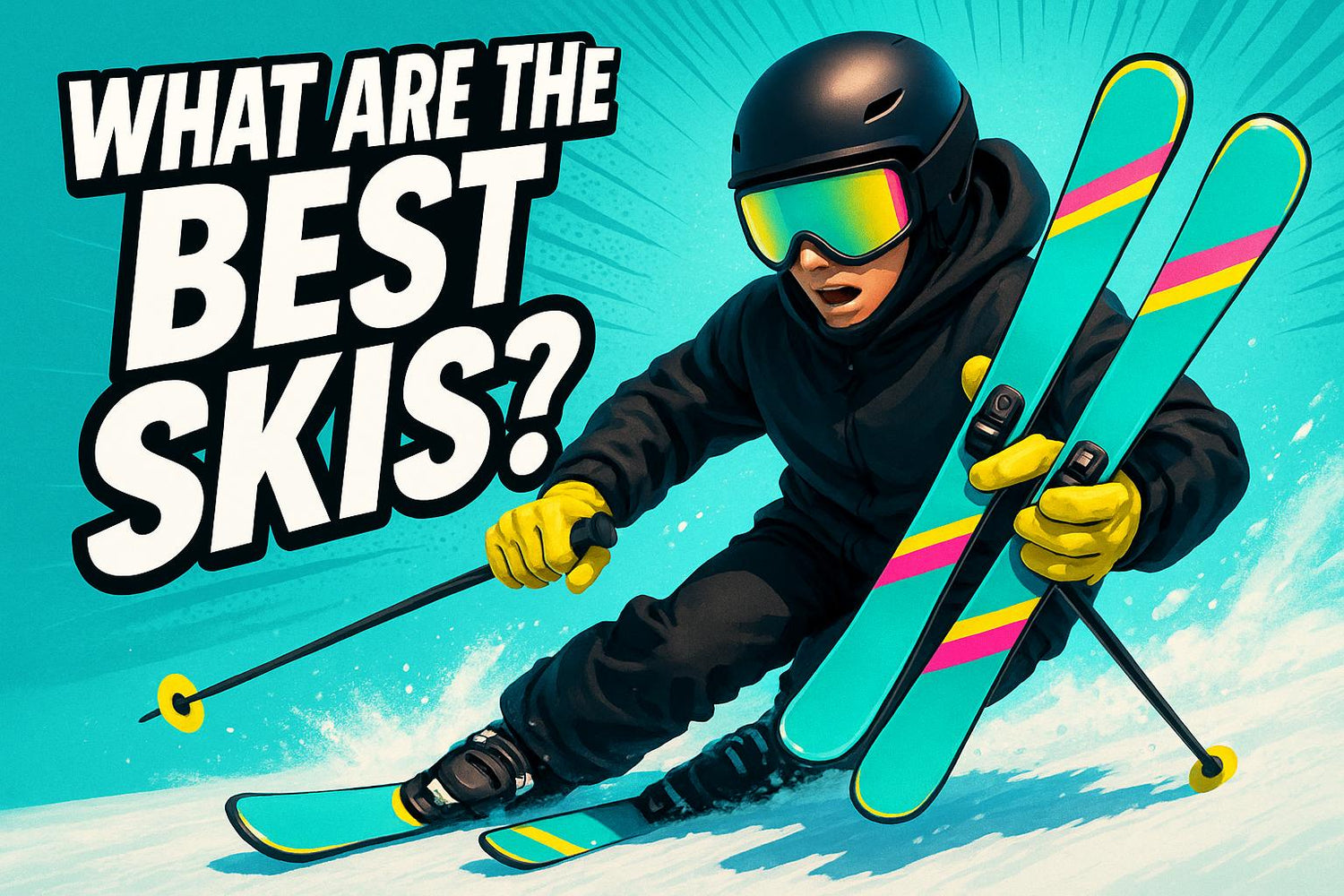
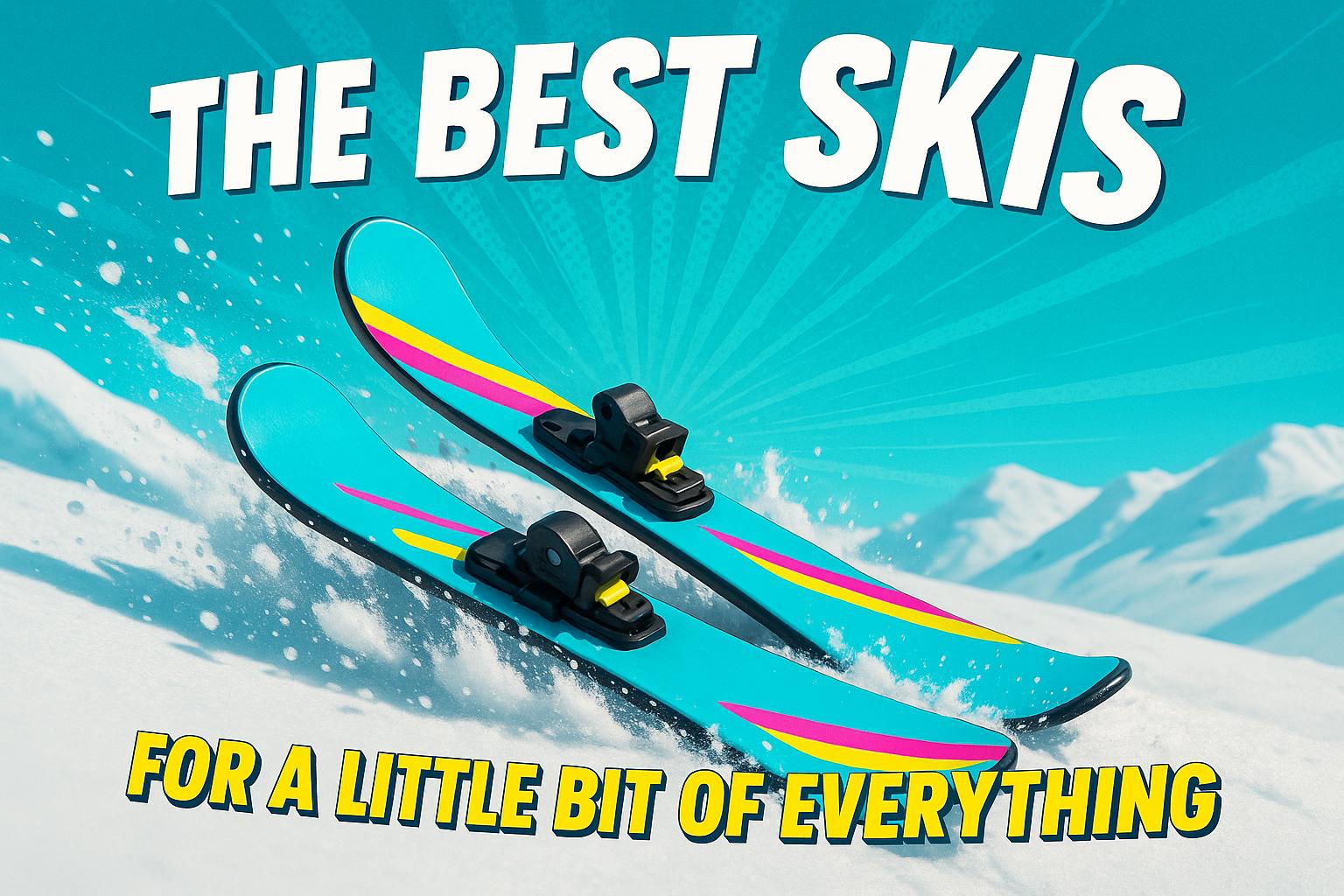
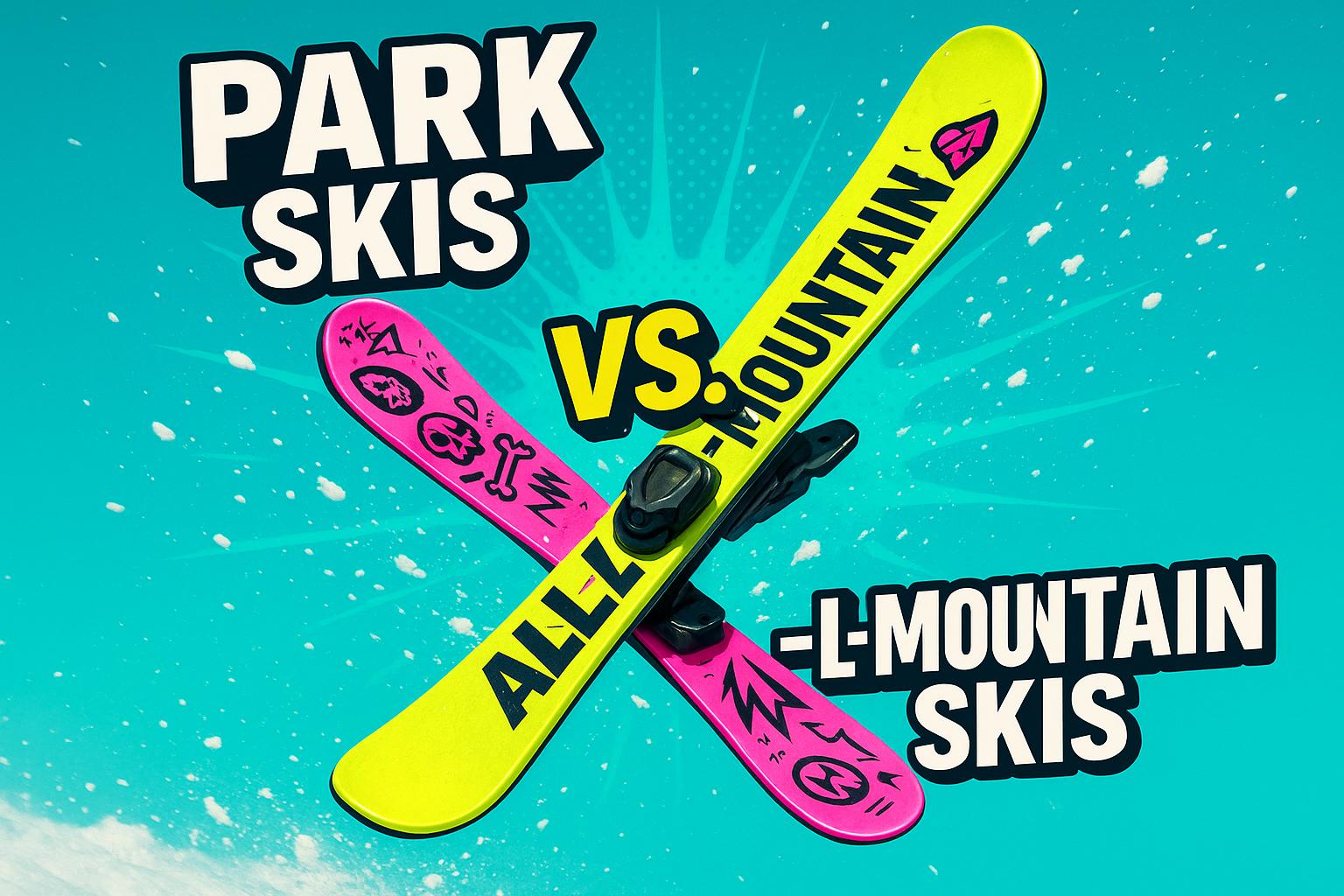







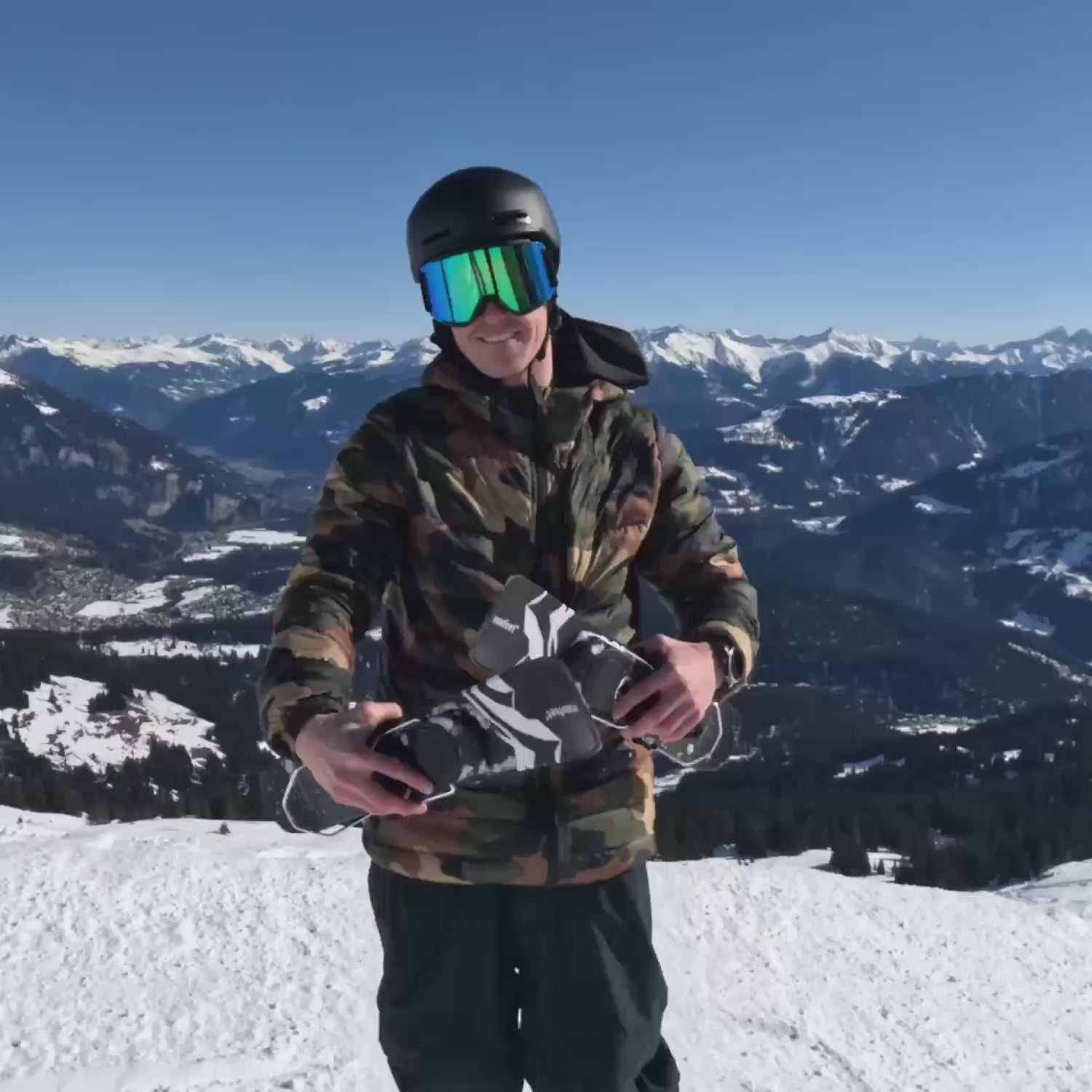

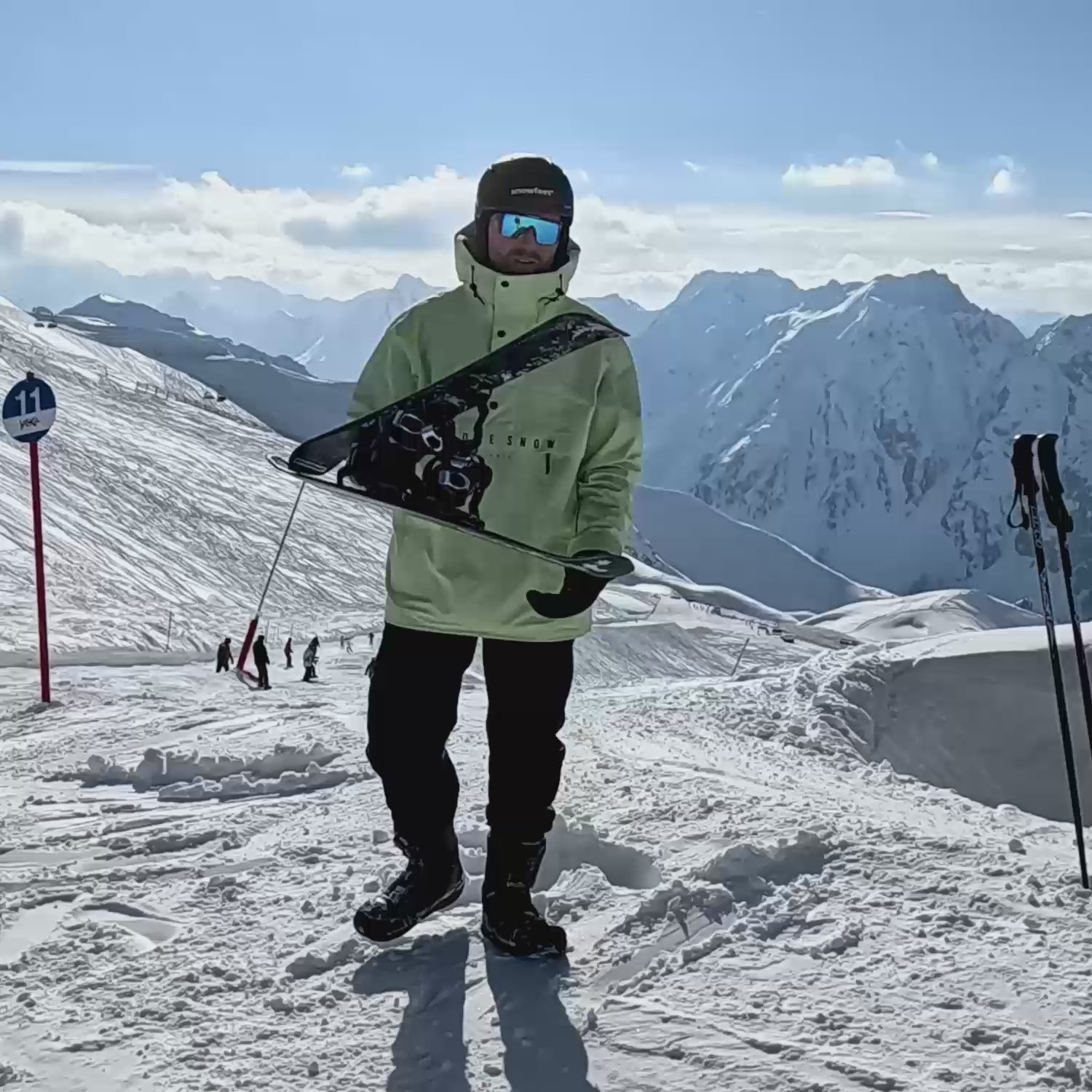
Zanechte komentář
Tento web je chráněn službou hCaptcha a vztahují se na něj Zásady ochrany osobních údajů a Podmínky služby společnosti hCaptcha.